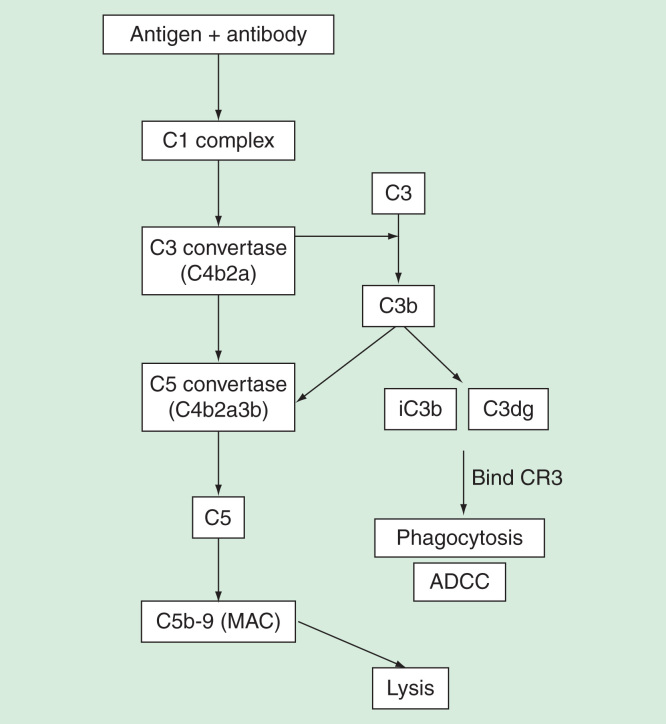Figure 4.
Immune complexes can trigger the complement pathway to result in either eventual lysis or phagocytosis of target antigen. C1q binding to immune complexes results in formation of C3 and C5 convertases that cleave C3 and C5, respectively. Cleavage of C3 results in fragments iC3b and C3dg that binds to CR3 present in leukocytes or NK-cells, resulting in phagocytosis and ADCC. C5 cleavage, on the other hand, results in formation of MAC that forms membrane pores and eventual lysis of target. Phagocytosis, ADCC and lysis assays can be used to assess involvement of complements.
ADCC: Antibody-dependent cell-mediated cytotoxicity.

